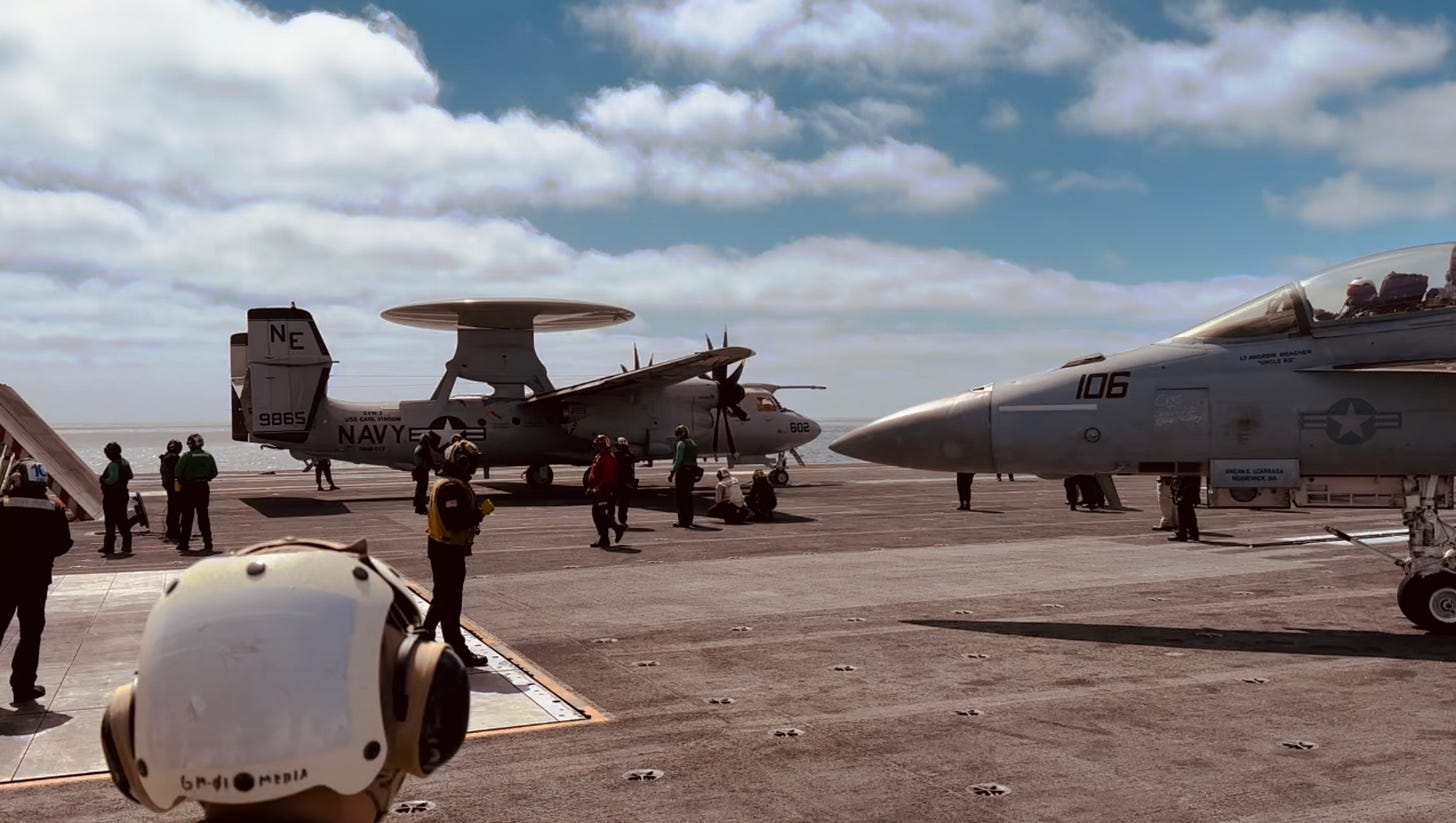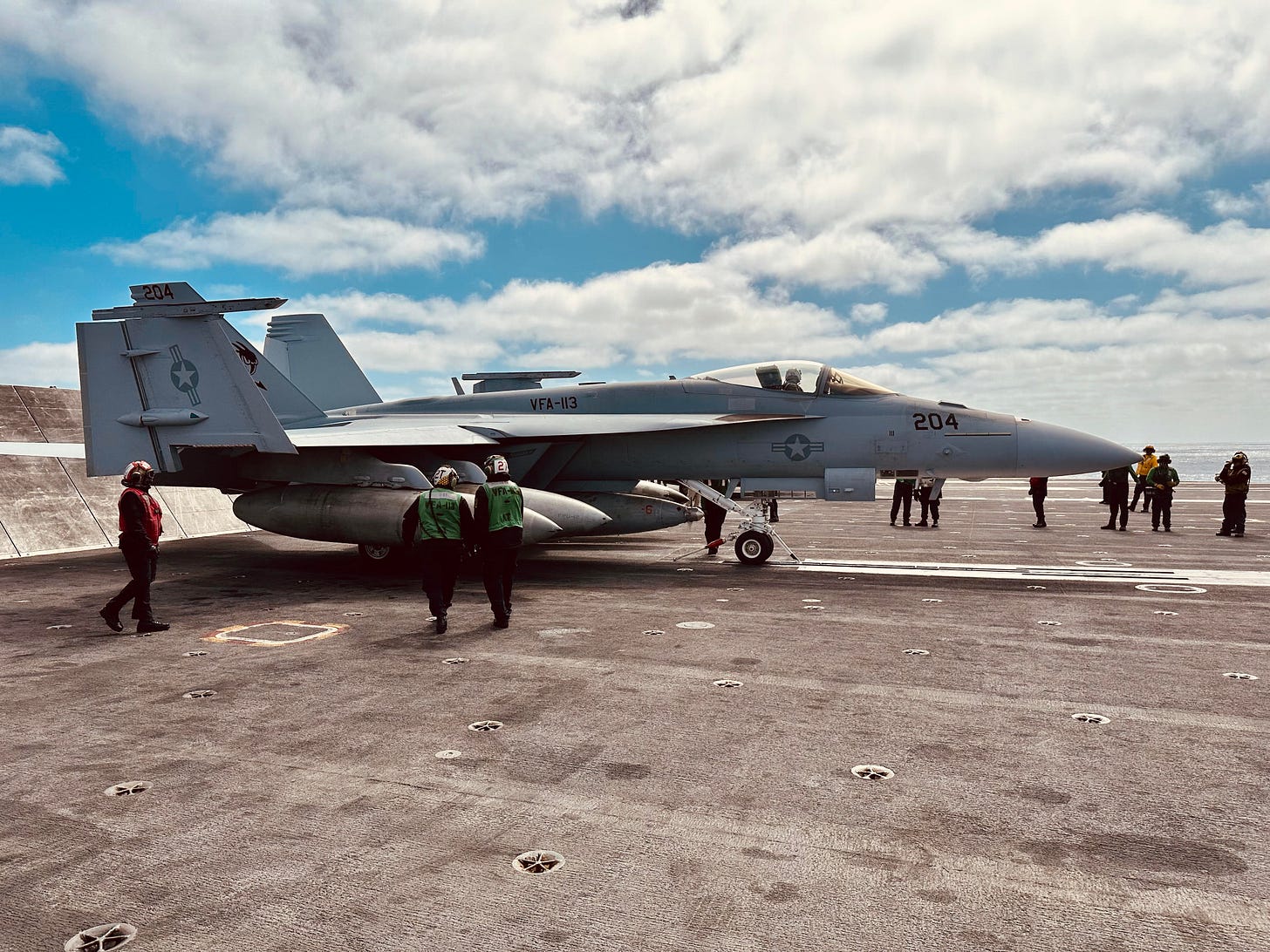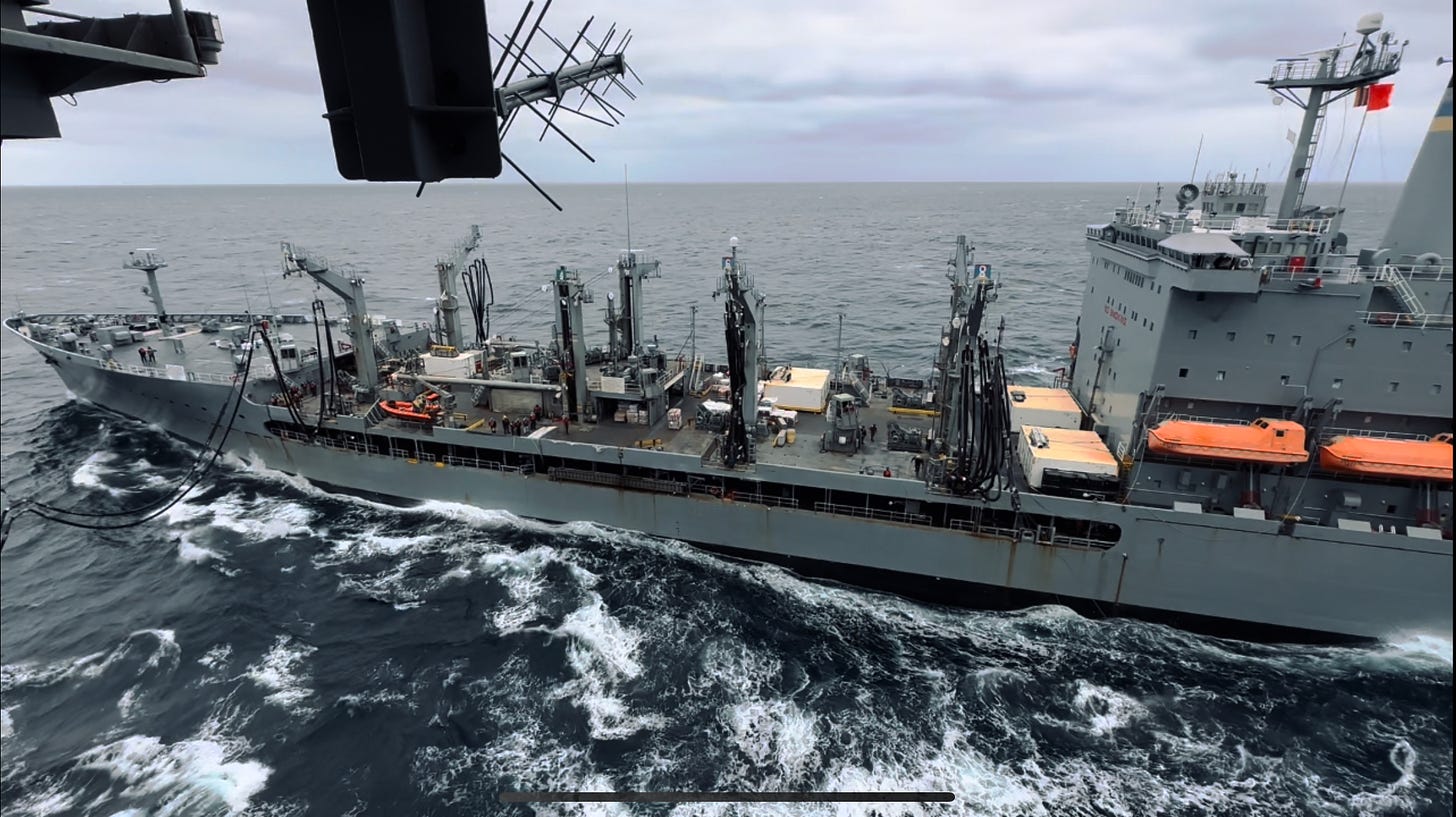USS Carl Vinson
Entrepreneurs often envision innovation everywhere. Make this better. Make this faster. Yet, just as important as finding places to innovate, is recognizing places not to innovate. This can be hard to do because from afar, everything looks like an opportunity. When you can get up close, it becomes possible to discern the already-fully-efficient areas from those with room to improve.
Last weekend, Dan and I had the chance to embark on the aircraft carrier USS Carl Vison at sea. A close friend is the JAG onboard and runs the legal department. We flew out to meet the carrier in the Pacific on a V-22 Osprey and spent a night observing flight operations and at sea maneuvers. This rare, direct insight helped to shape our understanding of how the military operates and how we can support defense technology development.
Flight Ops
We landed on the carrier in the mid-afternoon. After a short briefing, we went on deck to watch daytime flight ops and found about thirty planes preparing to launch. The flight deck was crowded and busy, but not chaotic. Teams moved urgently in clear patterns, communicating with hand signals over the background noise of spinning jet turbines.
Planes assembled in lines around three catapults and launches began. The first launch was shocking. Less than twenty-five feet away, an F-18 came up to full power and max afterburner before the catapult rocketed it down the deck. In a cloud of steam, it was airborne.
About twenty seconds later another plane launched. Thirty seconds passed and another lurched forward. In a testament to how refined the operations are, by the fifth or sixth launch, it seemed routine even to us. With the full squadron airborne, we retuned below deck to tour the hangar bays.
We returned to the flight deck after dusk to watch a set of night landings. The same dynamic presented. The deck was busy with a group of people that clearly all understood the plan. Planes came screaming in, caught the wire at full power and then quickly taxied away. Like in the launches, planes landed on less than thirty second intervals in a setting that seemed simply routine.
The operations we observed were the product of decades of evolutionary refinement. They were nearly fully efficient, with little room left to improve. Planes launched every thirty seconds. Maybe with innovation that could improve to every fifteen seconds, but is that transformational to the capability being delivered? My takeaway was no.
Resupply
The next day, the crew performed an Underway Replenishment (UNREP) of jet fuel and food. A merchant marine resupply ship held course about one hundred feet alongside the carrier. Fuel lines came across from the resupply ship and began transferring jet fuel.
The hangar floor was cleared near the side elevators doors. Cables were strung between the ships and pallets of food ziplined across. Sailors in a fire brigade line received the pallets and moved stores down the length of the ship to stockrooms. This took about a day. While labor intensive, the operation was effective and relatively quick considering its magnitude.
Room for Innovation
Flying to ship, I was excited to potentially find new opportunities to innovate and develop defense technologies. In observing the flight operations and the UNREP, what I found were two places that really didn’t need innovation. While it wasn’t what I had sought, it molded my understanding of how private organizations can support the DoD.
My first takeaway was that the DoD is highly effective at the operations they perform. There can be criticism around the DoD’s efficiency or bureaucracy, but there’s no question about it’s effectivity. As we find ways to innovate in defense technology, effectivity is the playing field. This is what operations are designed around and is fitting as the guiding North Star.
My second takeaway was the importance of culture. Both on the flight deck and during the UNREP, sailors operated with a collective understanding of the goals and guidelines. Operations were engrained in them.
Over a thirty year career, some of the most senior sailors had spent twenty five years at sea. Considering that, it doesn’t take many generations to get back to the first US Naval Forces. Some of the traditions and tattoos even traced back to the British Royal Navy. This highlights the importance of considering adoption when innovating. New technology needs to taper in appropriately to fit in with centuries of operational inertia.
My final takeaway is that knowing where not to innovate is just as important as finding opportunities to do so. This narrows the search function and helps to focus resources and investment. It can be hard to do this because the DoD is so big and there are so few opportunities to get up close to the operations. Finding ways to do so can enable a more effective use of private bandwidth.
The search for innovation aside, the experience was incredible. Highly refined operations are a thing of beauty. They’re hard to achieve and even harder to maintain. The sailors aboard the USS Carl Vinson and throughout the Navy operate at peak performance and the US is fortunate to have them.





